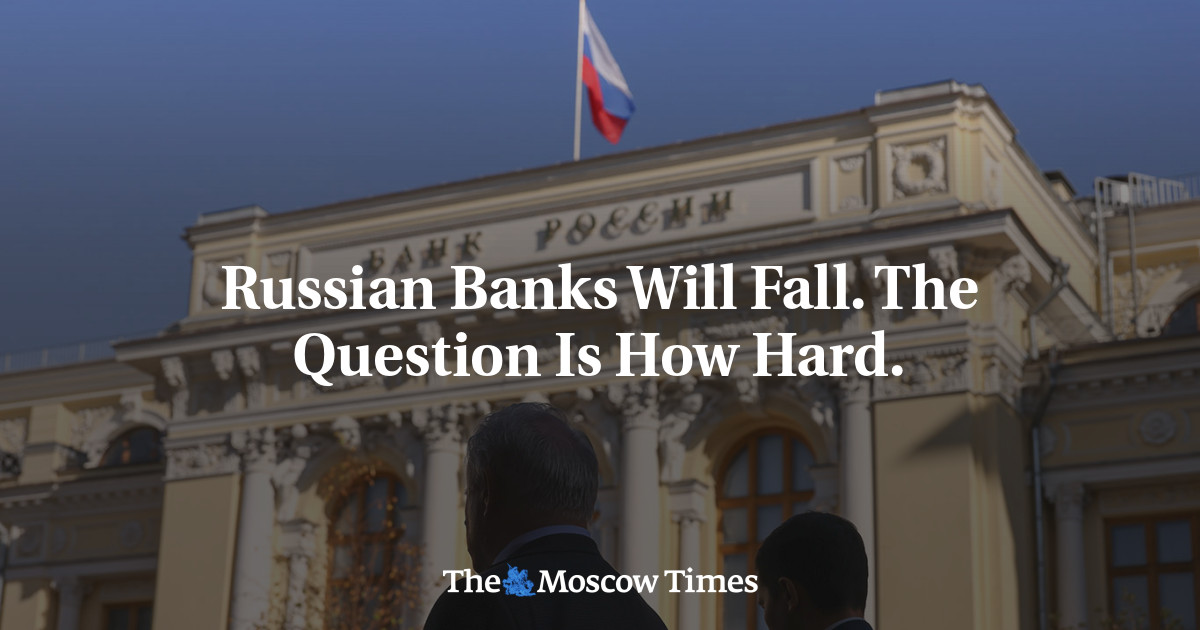
Russian Banks Will Fall. The Question Is How Hard.
How did your country report this? Share your view in the comments.
Diverging Reports Breakdown
Russian Banks Will Fall. The Question Is How Hard.
Russia’s banks are increasingly propped up by artificial mechanisms: capital controls, forced lending, government intervention and creative accounting. As sanctions tighten and the war economy deepens, liquidity is thinning, foreign reserves are shrinking and risk is accumulating behind closed doors. The cracks are already forming and a reckoning is unavoidable. It is not a matter of if there will be a crisis — only how severe it will be. The risk of a banking crisis doesn’t hinge on a single event but on the slow, relentless buildup of unsustainable pressure throughout the economy, writes Alexander Nekrassov, an economist at the Carnegie Moscow Center. The Central Bank has cut off key financial disclosures, including the structure of international reserves and allowing banks and companies to conceal ownership and management details. Its balance of payments reports are now so delayed and distorted that some analysts have called on the regulator to stop publishing them altogether. The top construction executive warned on July 21 that the industry is heading for a wave of bankruptcies, as sky-high interest rates cripple access to capital.
Once reported to have tried to resign when the war began, Nabiullina now finds herself defending a system under overwhelming pressure. Nabiullina is working hard to project stability amid growing signs of strain. “With full access to the banking system’s data, I can say with complete confidence that fears of a banking crisis are unfounded,” she declared at a financial congress on July 3. But not everyone is so confident. Putin’s former Economy Minister, German Gref, had sounded the alarm at the St. Petersburg Economic Forum in June, warning that the toxic mix of soaring interest rates and an overvalued ruble is creating “a perfect storm” that could suffocate investment and drag Russia’s economy into long-term decline. Gref now leads Sberbank, the cornerstone of Russia’s banking system, which controls about half of all deposits and a third of consumer and corporate loans. While Sberbank is likely in a stronger position than many of its peers, it stands to benefit if weaker banks go under and capital flees to more robust harbors. Yet the financial architecture that once seemed resilient now looks like a fragile shell: brittle, opaque, and dangerously overleveraged. The risk of a banking crisis doesn’t hinge on a single event but on the slow, relentless buildup of unsustainable pressure throughout the economy. Russia’s top construction executive warned on July 21 that the industry is heading for a wave of bankruptcies, as sky-high interest rates cripple access to capital. Alexei Krapivin, CEO of construction giant Natsproektstroy, said they are leaving firms unable to service debts or sustain ongoing projects. Corporate lending in Russia is clearly reaching a breaking point. Over 55% of loans now carry floating rates, and with interest rates staying high far longer than expected, many companies are slipping into pre-default. According to VTB chief Andrei Kostin, some companies are now borrowing solely to pay interest on existing debts. The analytical center CMAKS estimates that thirteen major industrial sectors, accounting for 17% of national revenue, are already under severe financial stress. A new EU sanctions package banning transactions with 22 Russian banks and tightening restrictions on oil exports also adds another layer of pain for a financial sector already creaking under wartime strain. That pressure comes on top of domestic overheating. Since mid-2023, Russia’s war-fueled economy has overheated, forcing the Central Bank to hold rates at 21% to curb soaring inflation. Nabiullina warned the economy was “racing at full speed.” Now the brakes are hitting hard, with retail lending stalled and corporate borrowing barely moving.
Source: https://www.themoscowtimes.com/2025/07/22/russian-banks-will-fall-the-question-is-how-hard-a89912
